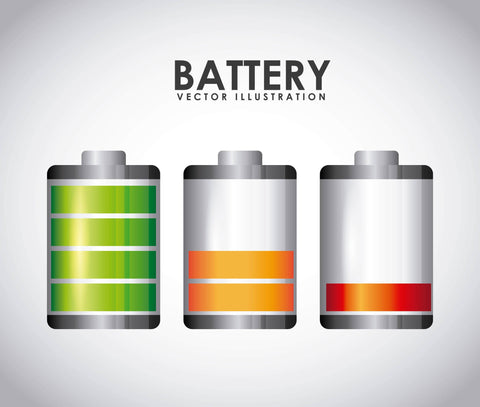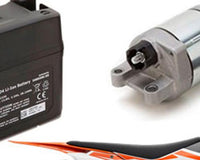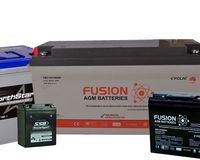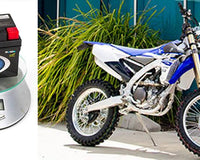D-size or D batteries are quite bigger than the AAA or AA batteries . These are also larger than the C dry cells. These cells come as both primary batteries and rechargeable types.
WHAT ARE D BATTERIES FOR
The D-size battery is a dry cell that is cylindrical in shape with electrical contacts at both ends. D cells were originally known as flashlight batteries. D batteries are mostly used in high drain applications such as flashlights, automatic odoriser, paper towel dispensers, transmitters, radio receivers, and other devices with extended running time requirement.

D BATTERY TYPES
Primary batteries can be either made of Alkaline, Lithium, Zinc Carbon, or Lithium Iron Disulfide (LiFeS2). Of these chemistries, Zinc Carbon and LiFeS2 are the only ones that are purely disposable cells. Lithium and Alkaline batteries have their rechargeable variants, as in the case of RAMs and Lithium-ion or the rechargeable Lithium. Nickel Metal Hydride (NiMH) and Nickel Cadmium (NiCad) are the rechargeable batteries with nominal voltages and other characteristics that are pre-determined by their specific battery chemistry.
BATTERY CHEMISTRY AND TECHNICAL DIFFERENCES
A Zinc Carbon D battery is technically known as R20 based on IEC standard and 13D for ANSI/NEDA name, with 8000 mAh charge capacity and 12 Wh typical energy capacity. The Alkaline chemistry has its IEC name as LR20 and 13A as its ANSI/NEDA name. Its typical charge capacity ranges from 12000 – 18000 mAh with the typical energy charge of 18-27 Wh, which is greater than the Zinc Carbon variant.
Lithium Iron Disulfide (LiFeS2) also got the names FR20 (IEC) and 13LF (ANSI). NiCad D cell is named as KR20 by the IEC. Its typical charge capacity is 2000 – 5500 mAh with an energy capacity of 2.5-6.9 Wh. IEC’s HR20 is the technical name for the NiMH D-size battery. This has higher charge capacity that ranges from 2200 to 12000 mAh while the typical energy ranges from 2.75 to 15 Wh. Lithium, Zinc Carbon, Alkaline, and LiFeS2 have the same nominal voltage of 1.5V.
D BATTERY DIMENSIONS/SPECIFICATIONS
The standard size of a D battery has an approximate length that ranges from 58.0 to 61.50 mm. The diameter ranges from approximately from 33.0 mm to 34.20 mm. Its weight ranges from 160-180 grams. Replacement sizes include Type 373, FR20, 13LF, 13A, 13D, LR20, R20 MN-1300, MX-1300, and BA-30.
PRIMARY D-SIZE BATTERIES
Primary D-size batteries are large cylindrical disposable cells that are practically used for applications drawing occasional power. These cells are used for both high drain and low drain applications. Some brands use Industrial D batteries for high drain devices. In the case of Procell, it has designed the world’s first dual portfolio of professional batteries to cater to the specific needs of high drain applications as distinctive to the power requirements of low drain variants. This is the reason why Procell Industrial D batteries are used for low drain devices while Procell INTENSE are used for high drain devices.
For instance, the Procell INTENSE Power D battery is used for air fresheners, hand sanitisers, flashlights, hand mixers, automatic towel dispensers, automatic faucets, security cameras, and many others. On the other hand, Procell Alkaline D battery is used in such low drain devices as motion sensors, two-way radios, diagnostics, clock radios, food scales and many other related applications.
ADVANTAGES OF PRIMARY BATTERIES
Primary batteries have various advantages that only users of these disposable cells can benefit. Here are some features turned benefits to its consumers.
- Ideal when charging seems impossible or impractical such as in forest fire services, rescue missions, and military combat
- As regulated under IEC 60086, primary batteries also service vehicle tire pressure gauges, heart patients’ pacemakers, hearing aids, wristwatches, children’s toys, electric keys, remote light beacons, remote controls, animal-tracking, and the mining industry’s intelligent drill bits.
- Instant readiness
- Long storage time
- High specific energy
- Reasonable power density and energy
- Cost effective
- Require little or very minimal maintenance
- Environmentally friendly
RECHARGEABLE D BATTERIES
Rechargeable D batteries look almost the same as the disposable ones. These may come with specific chargers in a pack from stores and other direct suppliers. However, in some cases, they are not. Depending on the brand and other specifications, these may require special chargers, universal ones for chargers that both work on C and D-size batteries at the same time. Rechargeable D batteries can last for about 2-3 years, though this depends on some other factors. These batteries come from such brands as NiMH, NiCad, Lithium-ion, other Lithium variants, and the rechargeable Alkaline or RAM. Rechargeable D-size dry cells are somewhat costly when compared to the primary variants.

D BATTERIES FREQUENTLY ASKED QUESTIONS
I hope to give you answers on the frequently asked questions on D batteries that 99.9% of the global battery consumers ask in maximising their D-size dry cells for suitable devices and applications.
-
HOW LONG DO BATTERIES LAST?
On average, primary D batteries last for about 36 hours and 3 minutes in constant use. On the other hand, the rechargeable variant lasts for about 2-3 years before they are unable to be recharged. Alkaline primary batteries can have a shelf life of up to 10 years, though usage and other factors can still affect battery life.
- HOW LONG SHOULD NIMH BATTERIES LAST?
NiMH batteries have 700-1000 life cycles. These have higher capacity, so these are not easily depleted compared to NiCad chemistry. On average, NiMH batteries claim a shelf life of up to 5 years while most last for about 3 years.
-
WHAT ARE THE PRIMARY ADVANTAGES OF NIMH RECHARGEABLE BATTERIES?
NiMH rechargeable batteries are quite popular among the other variants. This is because of some features and benefits that most consumers enjoy.
- Higher capacity: can last 2-4 times longer than other dry cells
- Better performance: ideally used for high drain applications
- Long battery life: can be repeated charged/discharged up to 500-1000 life cycles
- Stable performance: Its flat discharge curve implies that at 80% usage cycle, the NiMH battery will remain in high voltage.
- No memory effect provides easy charging and discharging
- Environment-friendly: contains no toxic chemicals
- Cost-effective
- WHAT DOES BATTERY CAPACITY MEAN?
Battery capacity is measured in “mAh,” which means, “milli amp hours .” For instance, a battery having a capacity rating of 1800 mAh, could deliver a current of 1800 milli amp in an hour. This also implies that the higher the mAh for the same battery types, the higher/longer the run times. However, the principle does not apply to dry cells of different manufacturers and types as run time is not always predictable with the indicated capacity rating. This still depends on various factors including the type of devices used, manufacturing, and other related variables.
- ARE D BATTERIES ALLOWED ON PLANES?
Yes, you can bring D batteries on planes both as carry-on and checked bags. A D-size battery belongs to the popular household dry cells. This household cells also include AA, AAA, and C-size batteries. In some aircraft, Lithium batteries are allowed as either carry on or checked bags with some limits and restrictions.
- CAN D BATTERIES EXPLODE?
Like any other battery, D batteries can explode if not handled properly, especially during disposal or in getting short circuits. Make sure to properly dispose primary batteries whenever they are not already in use. In the case of rechargeable batteries, make sure they are fully used up before sending them out for disposal or recycling facilities. Some batteries come with specific instructions regarding disposal and recycling procedures for safety and security purposes.
- WHY DO D BATTERIES LEAK?
D batteries leak because batteries discharge. This happens both through gradual self-discharge and usage. It is for the fact that the cell chemistry changes, generating hydrogen gas. As more hydrogen gases are being generated, it creates pressure in the cell. This is the point wherein the leakage occurs.
- HOW DO YOU STORE D BATTERIES?
Since some D batteries can leak, proper care and storage should be practiced all the time. It is best to store your D-size cells in dry environment at room temperature. A slightly cooler temperature is also believed to strengthen battery life, but this does not work on all batteries. Avoid storing them in extreme temperatures.
- ARE D BATTERIES RECYCLABLE?
Primary batteries are not hazardous and can be thrown along with regular trash. Rechargeable D batteries are recyclable. However, not all locations have recyclable bins for collecting batteries. You may ask your battery wholesaler/supplier or convenience stores if they have specific collection areas for recycling these batteries.

- WHAT IS MEMORY EFFECT?
The memory effect is also known as the lazy battery effect. It occurs with such rechargeable cells as NiCad and NiMH batteries but not on Lithium and other chemistries. This happens when you repeatedly charge the battery before the depletion of all stored energy. The effect is the loss of battery capacity.
- WHAT IS A TRICKLE CHARGE?
A low-rate charge is known as trickle charge. This is to replenish lost battery capacity during self-discharge.

- WHAT IS A SMART CHARGER?
A special charger that monitors the various battery parameters that helps determine when charging is enough is called a smart charger.
- WHY DO D BATTERIES BECOME WARM WHEN CHARGING?
Batteries become warm when charging because energy is being placed or stored in the battery. The shorter the charge time, the warmer it becomes.
- WHICH ELECTRONIC DEVICES ARE CONSIDERED AS HIGH DRAIN DEVICES?
Here is a list of electronic devices that require the use of D-size batteries for high drain devices.
- Torches
- Air Fresheners
- Automatic Soap Dispensers
- Flushometers
- Hands-free Sinks
- Automatic Taps
- Security Safes
- WHICH ELECTRONIC DEVICES ARE CONSIDERED AS LOW DRAIN DEVICES?
D-size batteries are also available for low drain devices. Here is a list of all devices and applications that require the regular D cells.
- Barricade Lights
- Ear Muffs
- Underground Cable Locators
- Air Monitors
- Amp Meters
- Cable Analysers
- Cable Meters
- Chlorine Meters
- Circuit Testers
- Electronic Balancers
- Electronic Scales
- Gas Analysers
- Hard Hat Lights
- Ionizer Testers
- Oxygen Meters
- Underground Cable Testers
- Volt Meters
- Clocks
- Power Quality Testers
- Office Equipment
- Megaphones
- Lighted Batons
- Radios
- Food Scales
- Freight Scales
- Money Counters
- Diagnostics
- Harmonic Analysers
- Flashlights
- Multimeters
- NTSC Generators
- Wireless Soldering Irons
- Wall Sensors and Scanners
- Environmental Verification Testers
- Hand Mixers
- Portable Timing Meters
- WHY GO FOR BULK BATTERIES?
Buying batteries in bulk or selecting bulk batteries on your shopping cart has its own advantages that consumers can benefit from. Think about stress-free shopping and the convenience of having to replace batteries anytime, anywhere. You also avoid the problem of running out of batteries. You will always have batteries with you for your favorite applications even during nighttime and other emergencies. The last most important thing that consumers can truly be thankful for is the fact that buying bulk batteries saves you money for greater profitability. You not only get to enjoy the discounts or batteries on sale, but you also get superior quality batteries at unbeatably low rates than usual.
- WHERE TO BUY D BATTERIES?
Get the best quality and unbeatable rates for your desired D batteries at HBPlus Battery Specialists. This is Australia’s most trusted direct supplier and battery wholesaler with unmatched quality, faster service, and offer lowest rates in the market. Save even more with bulk D batteries as you come to know the different bulk pricing options suitable to your specific battery requirements and aesthetic preferences. Feel free to contact us, as we process your orders and inquiries, whether you are within Australia, New Zealand, or from any other location.
THE BOTTOMLINE
D batteries are one of the household batteries that are always in demand from the various consumers around the world. These have even the industrial D variant that are mostly used for high drain applications. These are the instant power solutions for domestic, manufacturing, education, contractors, healthcare, utilities, commercial properties, and many other sectors and industries. Knowing more about these cells will give you the full picture of boosting your devices, enhancing battery life, as well as proper care and storage for achieving the best results that only D-size batteries can offer.









